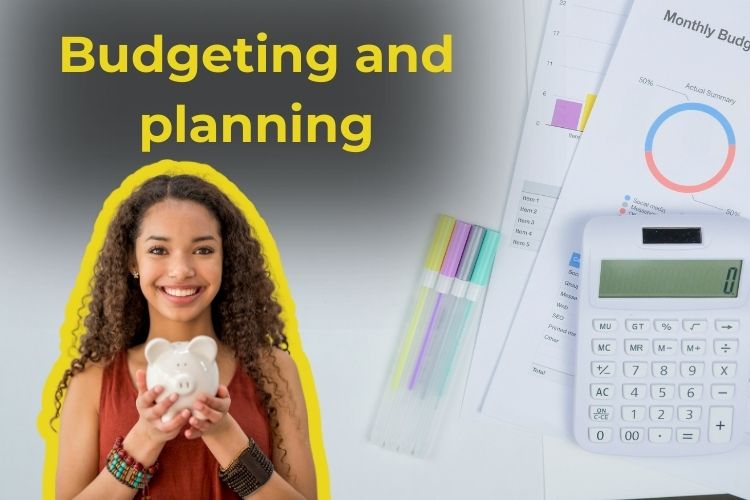Financial literacy isn’t something most kids learn in school — yet it’s one of the most important skills they’ll ever need. The good news? You don’t need to be a financial expert to teach your children about money. You just need a plan, some age-appropriate strategies, and a willingness to lead by example.
Teaching Kids About Money. In this guide, you’ll learn how to teach kids about money from toddlers to teenagers, helping them grow into confident, responsible, and financially independent adults.
Why Teaching Kids About Money Matters
Money impacts nearly every decision in life. Yet many adults admit they didn’t get financial education when they were young — leading to struggles with debt, overspending, or poor saving habits later on.
Teaching Kids About Money. When children understand money early, they’re more likely to:
- Save regularly
- Avoid unnecessary debt
- Develop strong financial habits
- Make smarter life and career choices
- Feel empowered instead of anxious around money
✅ Teaching financial skills is teaching life skills — and it pays dividends for generations.
Financial Lessons by Age Group
Teaching Kids About Money. Kids learn best when lessons match their age and developmental stage. Here’s how to approach teaching kids about money step by step:
Ages 3–6: Understanding the Basics
At this age, children are naturally curious and love hands-on learning. Teaching Kids About Money.
Key concepts:
- Money is used to buy things
- You must make choices (you can’t buy everything)
- Saving is important
How to teach:
- Use play money and games like “store” or “bank”
- Let them hand over money at a real store
- Introduce a clear jar to save coins and watch progress grow
- Read storybooks about money (e.g., Bunny Money, A Chair for My Mother)
✅ Keep it simple and visual. Kids this age learn best through repetition and fun activities.
Ages 7–10: Learning to Earn, Save, and Spend
At this stage, kids start connecting work with money and can grasp more structured lessons.
Teaching Kids About Money. Key concepts:
- Money is earned through work
- Needs vs. wants
- Saving takes time and patience
How to teach:
- Give a small allowance for completing age-appropriate chores
- Use the “three jars” system: Save, Spend, Give
- Set small savings goals (like buying a toy or funding an outing)
- Let them make spending choices — even if they make “mistakes”
✅ Encourage delayed gratification and allow them to practice decision-making.

Ages 11–13: Developing Responsibility
As pre-teens grow more independent, they’re ready for real-world money concepts. Teaching Kids About Money.
Key concepts:
- Budgeting and planning
- Opportunity cost (choosing one thing means not choosing another)
- Introduction to banking
How to teach:
- Help them open a youth savings account
- Introduce a simple budget for things like clothes or entertainment
- Use apps or spreadsheets to track allowance and spending
- Discuss advertising, peer pressure, and how companies influence spending decisions
✅ Teach them how to plan, not just react to money.
See also: Understanding Investment Risk: A Smart Investor’s Guide to Managing Uncertainty.
Ages 14–18: Preparing for Independence
Teenagers are almost ready to manage money on their own — which means they need practical experience now.
Key concepts:
- Budgeting, saving, credit, and investing
- Earning through part-time jobs or side gigs
- Setting financial goals for the future
How to teach:
- Involve them in family budget conversations
- Encourage part-time work and saving a portion of earnings
- Open a teen checking account or even a Roth IRA (if they have earned income)
- Explain how credit cards and interest rates work
- Introduce investing and compound interest with simple examples
✅ Now is the time to build real-world readiness and confidence.
Lead by Example
Teaching Kids About Money. Children learn more from what you do than what you say.
Ways to model smart financial habits:
- Talk openly (but calmly) about money
- Show how you budget, save, and invest
- Let them see you comparison shop or set financial goals
- Be honest about past mistakes and what you learned
✅ Your behavior is their blueprint. If you want them to grow financially strong, they need to see those habits in action.
Use Tools and Resources
Teaching Kids About Money. You don’t need to invent every lesson yourself. Many tools make teaching kids about money easier and more fun.
Helpful tools:
- Apps like Greenlight, GoHenry, or Bankaroo for allowances and saving goals
- Books for teens, such as I Want More Pizza or The Motley Fool Investment Guide for Teens
- Family game nights with Monopoly, Cashflow for Kids, or The Game of Life
- Educational videos and YouTube channels that cover budgeting or saving basics
✅ Choose age-appropriate media that engages and educates at the same time.
Talk About Giving
Financial literacy isn’t just about spending and saving — it’s also about generosity. Teaching kids the value of giving builds character and empathy.
Ideas:
- Let them choose a cause to support with part of their money
- Volunteer as a family to show how time is also valuable
- Explain how giving creates both impact and joy
✅ Financial literacy includes financial empathy.
Keep the Conversation Going
Money education isn’t a one-time talk — it’s a lifelong process. Kids need consistent reinforcement and safe spaces to ask questions.
Tips:
- Create a judgment-free zone for financial questions
- Encourage curiosity instead of perfection
- Celebrate progress and milestones, like saving for a big purchase
- Adjust lessons as they grow and face new challenges
✅ Empowerment grows through practice, feedback, and patience.
See also: 10 Proven Steps to Create a Personal Budget That Works.
Final Thoughts: Give Them a Head Start That Lasts a Lifetime
Teaching kids about money doesn’t require a perfect financial background — it requires intention, openness, and consistency.
When you give children the tools to manage money wisely, you’re not just preparing them for financial independence. You’re giving them confidence, freedom, and opportunity for life.
Start where they are, grow together, and build financial wisdom — one age, one lesson, one habit at a time.
FAQ – How to Teach Kids About Money at Any Age.
Why is it important to teach kids about money early?
Early money lessons help kids build healthy habits, avoid debt, and make smart life decisions. Financial literacy gives them confidence and reduces anxiety around money as they grow.
What are simple ways to teach money to young children (ages 3–6)?
Use play-based learning with games, storybooks, and a clear jar to show how saving works. Let them hand over money at the store to connect spending with real-life experience.
How can I teach school-age kids to earn and manage money?
Introduce chores for allowance, use three jars for save/spend/give, and let them make basic spending decisions. Encourage goal-setting and patience through saving for small rewards.
What should teens learn about personal finance?
Teens should learn about budgeting, credit, saving from work income, and basic investing. Open a checking or savings account, involve them in money decisions, and explain real-world tools like interest and taxes.
How do I set a good example with money as a parent?
Model smart habits by talking openly about saving, budgeting, and spending. Let them see you make thoughtful financial choices and share what you’ve learned from past experiences.

